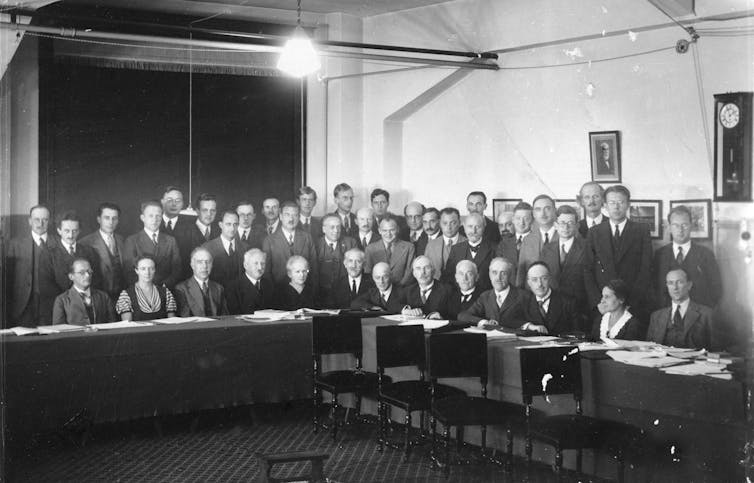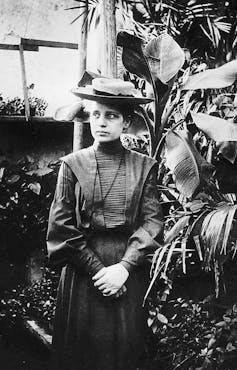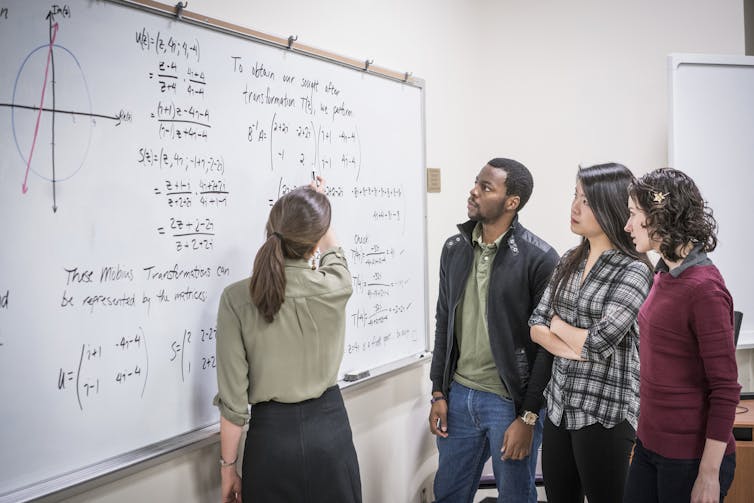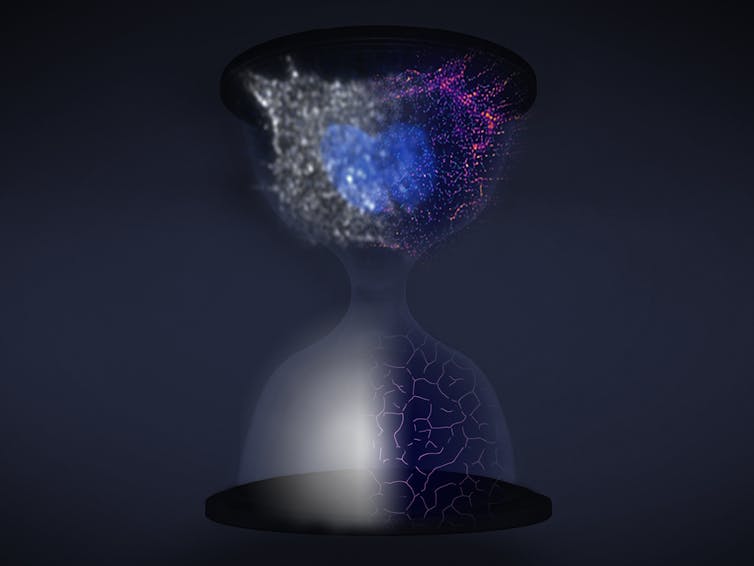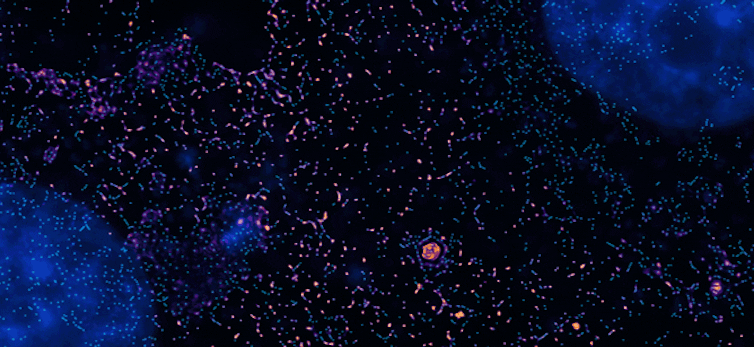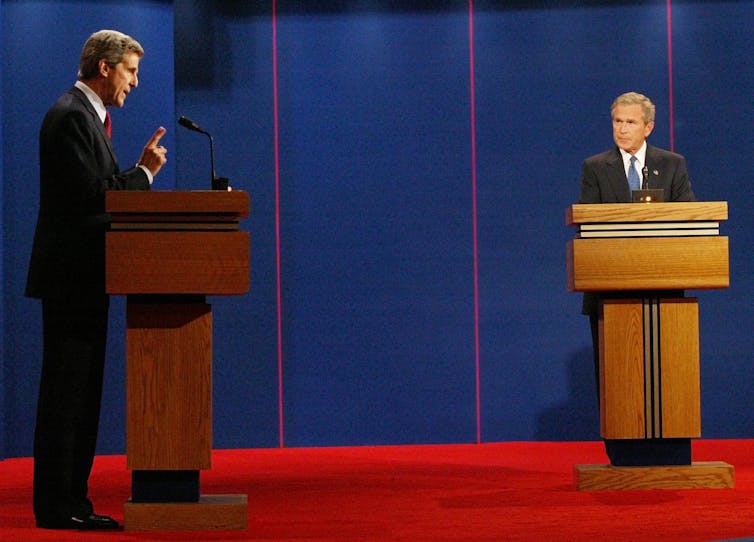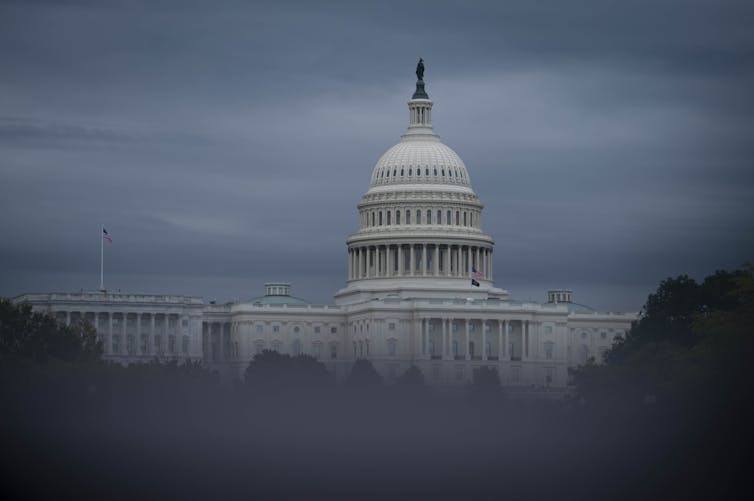
A congressional subcommittee met on June 26, 2023, to hear testimony from several military officers who allege the government is concealing evidence of UFOs. By holding a hearing on UFOs – now called “unidentified anomalous phenomena” by government agencies – the subcommittee sought to understand whether these UAPs pose a threat to national security.
I’m an astronomer who studies and has written about cosmology, black holes, exoplanets and life in the universe. I’m also on the advisory council for an international group that strategizes how to communicate with an extraterrestrial civilization should the need ever arise.
While the hearings brought attention to UAPs and could lead to more reporting from people who work in the military and aviation, the testimonies did not produce evidence to fundamentally change the understanding of UAPs.

UFO oversight so far
The House subcommittee hearing follows a flurry of activity over the past few years. Public interest in UAPs surged in 2017 after three Navy videos were leaked and The New York Times reported on a shadowy UAP program run by the Pentagon. In June 2021, the Office of the Director of National Intelligence released a report on the phenomena. In November 2021, the Pentagon formed a new group to coordinate efforts to detect and identify objects in restricted airspace.
Then in May 2022, a House Intelligence subcommittee held the first congressional hearing in over half a century on military reports of UAPs. Little new light was shed on the true nature of the sightings, but the officials tried to clarify the situation by ruling things out.
While officials noted 18 occasions in which aerial objects had moved at considerable speed without visible means of propulsion, nobody had found unexplained wreckage or records of the military having either received communications from or having fired shots at UAPs. As such, the subcommittee decided that there was not yet enough evidence to claim UAPs are extraterrestrial.
Most recently, NASA convened a panel in June 2022, which held its first public hearing in May this year. The panel will help NASA advise intelligence agencies and the Department of Defense on how to evaluate mysterious sightings. The panel is considering 800 sightings accumulated over 27 years, with 50 to 100 new reports coming in each month. Sean Kirkpatrick from the Department of Defense said that only 2% to 5% of these are anomalous, and the meeting drew no firm conclusions.
Which brings us to this week’s hearing. Congress is getting frustrated with the lack of transparency over UAP sightings. So the subcommittee is using its overall charge of oversight and accountability to get some answers.
Eyebrow-raising testimony
Three witnesses, all ex-military officers, gave sworn testimony to the subcommittee.
David Fravor was a commander in the U.S. Navy in 2004, stationed on the USS Nimitz, when he and another pilot saw an object behaving inexplicably. Video of the encounter was released by the Department of Defense in 2017 and publicized by The New York Times.
Fravor testified that the technology he witnessed was far superior to anything human beings have. He described objects with no visible means of propulsion carrying out sudden maneuvers that no known technology could achieve.
“What concerns me is that there is no oversight from our elected officials on anything associated with our government possessing or working on craft that we believe are not of this world,” Fravor said.
The second witness, Ryan Graves, was an F-18 pilot for over a decade. While stationed at Virginia Beach in 2014, he says, UAP sightings were so frequent among his crew that they became part of daily briefs. He recounted a situation in which two jets had to take evasive action as they encountered a UAP. The description was striking – a dark gray cube inside a clear sphere – quite different from the classic “flying saucer.”
Graves founded Americans for Safe Aerospace to create a center of support and education for aircrew affected by UAP encounters. He testified that the group has 5,000 members and has taken information from 30 witnesses. Most are commercial pilots at major airlines. He alleged that all UAP videos since 2021 are classified by the Pentagon as secret or higher. Graves also said that only 5% of UAP sightings by military and commercial pilots are reported by the pilots that spot them.
“If everyone could see the sensor and video data that I have, there is no doubt that UAP would be a top priority for our defense, intelligence and scientific communities,” Graves said.
The real bombshell came from David Grusch, an Air Force intelligence officer who retired with the rank of major. His high level of security clearance meant he saw reports that were unknown to the public. He sought whistleblower protection after claiming that the U.S. government was operating with secrecy and above congressional oversight with regards to UAP – even claiming that crashed UAPs had yielded biological material of nonhuman origin. The Pentagon has denied this claim. He also said he’d suffered retaliation after reporting this information to his superiors and to multiple inspectors general.
“I was informed, in the course of my official duties, of a multidecade UAP crash-retrieval and reverse-engineering program to which I was denied access,” Grusch said in his opening statement to the subcommittee. The Pentagon has denied the existence of such a program now or in the past.
Calls for transparency
While none of this testimony brought forward viable evidence of a broad government conspiracy, most UAP data is not made public and is held by intelligence agencies or the Pentagon. Lawmakers from both parties called for more government transparency. When questioned, all three witnesses said that UAPs represented a clear threat to national security.
If these testimonies are truthful, UAPs of advanced technology – whether they originate from a foreign adversary or not – that make routine incursions into U.S. airspace are a cause for concern.
For now, the subcommittee will continue its work. A tangible outcome will probably be an anonymous reporting mechanism to overcome the stigma commercial and military pilots feel when they witness a UAP. The push for government transparency will likely intensify, and subcommittee members hope to have a classified briefing to evaluate the claims made by Grusch.
As a scientist, I’m trained to be skeptical, and I know that most UFO sightings have mundane explanations. Visual evidence is also notoriously difficult to interpret, and even the dramatic Navy videos have been debunked. More and better data will help resolve the issue, but the gold standard is physical evidence. If Grusch’s claims of crashed UAPs are ever verified, that will be the first UAP hearing with a truly dramatic outcome.
Chris Impey, University Distinguished Professor of Astronomy, University of Arizona
This article is republished from The Conversation under a Creative Commons license.

